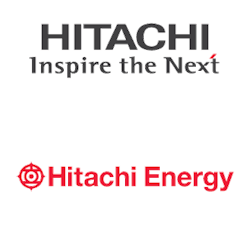Markus Heimbach
Dr. Markus Heimbach is Executive Vice President and Managing Director of the High Voltage Products Business Unit within Hitachi Energy.
Shifting the global electricity supply toward carbon-free sources is essential to reduce greenhouse gas (GHG) emissions and a priority in combatting climate change. The world added 295 gigawatts (GW) of renewable generating capacity in 2022[1] according to the International Energy Agency (IEA) and renewable energy production is becoming ever more cost-efficient.
It certainly is encouraging that the adoption of renewable generation continues to accelerate. Further to this there is the opportunity to reduce the impact of the transmission and distribution (T&D) portion of the energy supply. Now more than ever, the world needs eco-efficient power grids that do their share to reduce GHG emissions and a key focus of such efforts, which has emerged as a priority for utilities in recent years, is eliminating sulfur hexafluoride (SF6) gas.
Why? SF6 has been the preferred choice for circuit-breakers and gas-insulated switchgear (GIS) in high-voltage substations for decades. It is widely deployed due to unique characteristics that make it ideal for electrical insulation and current interruption. Unfortunately, it is also an extremely potent and persistent GHG, with a global warming potential (GWP) 24300 times higher than carbon dioxide (CO2) and remaining in the atmosphere for more than 1000 years if leaked.
Moving Beyond SF6
The industry has long sought alternatives, and over the past decade, several SF6 replacement formulations have been developed and tested in high-voltage equipment. Fortunately, a suitable substitute has emerged, a new gas mixture consisting of a small percentage of a fluoronitrile together with carbon dioxide, CO2, and oxygen, O2. The mixture’s GWP is more than 100 times lower than that of equivalent equipment run on SF6 and is a reliable and eco-efficient solution for high-voltage switchgear.
The mixture is ideally suited for high-voltage metal-enclosed equipment such as gas-insulated switchgear (GIS), gas-insulated lines (GIL), Dead Tank Breakers (DTBs), and hybrid switchgear because of the following advantages:
- Same compactness as SF6
- Dramatic decrease to the lowest possible carbon footprint: the GWP of SF6 is eliminated and the size and weight of the equipment kept the same - all while delivering identical capabilities and ratings and reliability performance as conventional SF6 switchgear technology including the switching of capacitor banks and inductors
- Scalable to any required voltage
- Standardized gas handling practices and training similar to SF6, ensuring a smooth, seamless transition to the new equipment
- Widespread acceptance across the industry, leading to superior economies of scale for auxiliary equipment and positive networking synergies
The past two years have seen a commercialization wave of high-voltage switchgear products that utilize the eco-efficient fluoronitrile-based gas mixture. Hitachi Energy introduced its first offerings in 2021, and the company plans to provide a complete SF6-free portfolio across the entire high-voltage switchgear range in the coming years.
The latest breakthrough was achieved in August 2022 with the introduction of the 420 kV (63 kA) SF6-free circuit-breaker. High-voltage circuit-breakers experience extreme mechanical, electrical, and thermal stresses during operation, making for a significant design challenge. A 420 kV circuit-breaker, for example, is typically required to interrupt fault currents of up to 63,000 Amps in a fraction of a second, a process that involves a release of energy comparable to a head-on car crash, generating temperatures (albeit very briefly) that are hotter than the surface of the sun. The newly introduced circuit-breaker is a key enabler of several 420 kV high-voltage switchgear applications that are needed for long-distance power transmission.
On June 20, 2023, Hitachi Energy delivers the world’s first eco-efficient EconiQ™ 420-kilovolt (kV) Dead Tank Breaker to Eversource. This will be the first 420 kV SF6-free circuit-breaker installation in the world, an industry-historic milestone and a game-changer for a power grid free of SF6.
This SF6-free circuit-breaker is part of Hitachi Energy’s EconiQ eco-efficient portfolio that offers products, services and solutions proven to deliver exceptional environmental performance. It also includes EconiQ Retrofill, another first in replacing SF6 in existing high-voltage gas insulated lines.
Building for Tomorrow, Today
With increasingly stringent government regulations and corporate policies driving GHG reduction strategies, the most honest and professional evaluation of environmental performance is the total carbon footprint of a product over its life cycle. This is the basis on which Hitachi Energy assesses its systems, and the company has found that total carbon footprint comparisons favor gas mixture technology as it enables a smaller size and weight of the metal-enclosed switchgear compared to other SF6-free solutions.
The clean energy transition demands an aggressive expansion of power grids. In addition, power from renewable energy sources often needs to be transported over longer distances unlike conventional, thermal generation sources. The greater distances will require higher voltage systems, more transmission and distribution infrastructure, and also additional substations. This is why it is particularly important to ensure that these substations are sustainable and compact.
We now have a reliable, scalable, eco-efficient alternative to SF6 at hand. The high-voltage EconiQ portfolio reduces the carbon footprint of substations dramatically and can be seamlessly integrated into existing grids. It is quickly emerging as the industry standard for power grids free of SF6.
A power grid free of SF6 is the ultimate contribution of the T&D community in the fight against climate change and Hitachi Energy is proud to pioneer this transformation with the first commercial delivery of a 420 kV SF6-free Dead Tank Breaker.[1] International Energy Agency (IEA)
Sponsored by:

